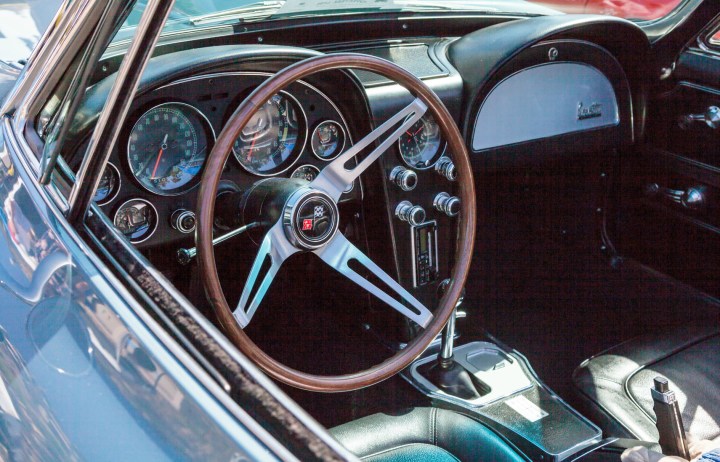
There’s no debating who has the need for speed in the @WhiteHouse.
SNEAK PEEK of @JayLeno & @VP in his ’67 Corvette Stingray. #DebateNight pic.twitter.com/UkFn9Ldykt
— Jay Leno's Garage (@LenosGarage) October 19, 2016
It’s not because he’s an avowed speed freak that the Secret Service doesn’t let Biden drive his ‘Vette. Presidents and vice presidents aren’t allowed to drive anything while holding office or for six months thereafter. Since Biden took office he has only been allowed to drive his favorite car three times.
The vice president’s father gave him the Corvette as a wedding present on August 19, 1967. Biden’s sons Beau and Hunter had the engine rebuilt recently and both he and Leno say it runs perfectly. The Veep also said it’s the “only car he’s ever loved.” The green convertible has a four-speed manual transmission and a 327 V8 engine with 300 horsepower.
The preview video was filmed at Secret Service Moran Vehicle Training at a location identified as “somewhere outside Washington D.C.” Biden says he once “buried it” at 160 mph when he was younger. He then quips, “I shouldn’t say this on television — I like speed.”
While Biden and Leno were cruising the roads at the training center, Biden nailed the accelerator a couple times, each time visibly pushing his passenger back in the seat. After a while, a second Corvette pulls out from a side road, a 2015 Stingray Z51 that immediately roars past the VP’s car. “I wonder who that cowboy is,” Biden mutters before hitting the gas to catch up.
When they get back to the starting point, the other Corvette is already parked, with former Secretary of State Colin Powell at the wheel.
The VP Speed episode of Jay Leno’s Garage is set to air on November 9 on CNBC.




